Boosting our economy – both nationally and globally – and solving humanity’s shared climate change challenge are not mutually exclusive endeavors. In fact, many of today’s brightest minds say they go hand in hand, and even make the case that climate change can be turned into a trillion dollar wealth-creating opportunity. A joint initiative of the Stanford Law School and Graduate School of Business, Stanford’s Steyer-Taylor Center for Energy Policy and Finance is on a mission to design innovative policies and financial mechanisms to scale-up the deployment of clean energy in the US and globally. Essentially, they’re working to unlock trillions of dollars of private capital that will drastically reduce the time and cost of our transition to a prosperous and sustainable future. Learn more about their strategies and the Aligned Intermediary project with Alicia Seiger, the Deputy Director of the Stanford Steyer-Taylor Center for Energy Policy and Finance.

Tell me about the current projects you’re working on.
My overarching focus is on ways to unleash philanthropic and long-term sources of capital for climate solutions, efficiently and effectively. Under that umbrella, I have two primary work streams. One is a workshop series designed to help asset owners prepare their portfolios for the financial risks and opportunities associated with a changing climate. The other pursues the design of innovative strategies that can scale-up private investment in climate solutions. The Aligned Intermediary (AI) project is an example of a novel approach aimed at connecting the world’s largest pools of capital with direct investments in clean energy, clean water, and clean waste. Originally born out of a research collaboration with Ashby Monk at the Stanford Global Projects Center and Sarah Kearney from the PRIME Coalition, the AI now works with long-term investors (i.e. pensions, endowments, sovereign funds, family offices, foundations) to identify, screen, assess, and structure direct investments in companies and projects with the potential to produce significant reductions in greenhouse gas emissions, while at the same time earning superior risk adjusted returns.
What is the goal of the Aligned Intermediary project?
 The original goal of the project was to design a blueprint for a purpose built “aligned intermediary” to connect the world’s largest pools of capital with direct investments in climate solutions. The project gained so much visibility and momentum out of the gate that the name – originally intended to be said using air quotes – stuck. Rather than involving complex financial engineering, the AI’s secret sauce is in its approach to organizational design and the allocation of human capital. Our concept paper addressed the key barriers for long-term investors looking to participate in this evolving marketplace. Since the paper was released under the spotlight of the White House, we were able to attract interest from foundations to get it off the ground. We were able to hire an accomplished CEO (Peter Davidson, formerly head of the Department of Energy’s Loan Program Office) and develop a proper business plan. The AI is now a registered public benefit corporation with a membership of a half a dozen investors who have collectively committed to deploy over a billion dollars into transactions identified by Peter and his team.
The original goal of the project was to design a blueprint for a purpose built “aligned intermediary” to connect the world’s largest pools of capital with direct investments in climate solutions. The project gained so much visibility and momentum out of the gate that the name – originally intended to be said using air quotes – stuck. Rather than involving complex financial engineering, the AI’s secret sauce is in its approach to organizational design and the allocation of human capital. Our concept paper addressed the key barriers for long-term investors looking to participate in this evolving marketplace. Since the paper was released under the spotlight of the White House, we were able to attract interest from foundations to get it off the ground. We were able to hire an accomplished CEO (Peter Davidson, formerly head of the Department of Energy’s Loan Program Office) and develop a proper business plan. The AI is now a registered public benefit corporation with a membership of a half a dozen investors who have collectively committed to deploy over a billion dollars into transactions identified by Peter and his team.
How did the Aligned Intermediary begin?
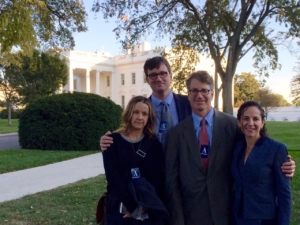
Some of the AI team at the White House (left to right: Tracey Durning, Ashby Monk, Peter Davidson and Alicia Seiger)
The AI launched about a year ago, and the work that led up to its launch started a year before that. In the fall of 2014, Sarah Kearney, Peter Berliner, (formerly) of Mission Investors Exchange, and I drafted a white paper expounding on impact investing in the energy sector, including recommendations for how the federal government can mobilize private capital for energy innovation and deployment. In February 2015, in response to that work and many parallel efforts, the White House announced the Clean Energy Investment Initiative. The initiative called for the mobilization of $2 billion in investments from foundations, institutional investors, and family offices for clean energy. In response to the White House’s call to action, Sarah and I teamed up again, this time with Ashby Monk, to co-author a blueprint for an “aligned intermediary” (see Energizing the US Resource Innovation Ecosystem) with the potential to unlock billions of dollars of private capital. To keep the drum beat rolling, the White House hosted a summit in June 2015 to measure progress toward the initiative’s goal. In that very tight four-month window, we were able to draft the paper, circulate it, and collect $1 billion of pledged capital in support of the AI concept, enabling the White House to ultimately announce $4 billion against the $2 billion target.
The Aligned Intermediary Project works to pool large sources of capital for investment in climate solutions. What are the investments you’re recommending? Where should the money go?
First, let me say that I am an advisor to the AI. I personally don’t make any investment recommendations to anyone. But to answer your question – it depends on the investor.
What the AI does is match the needs of its members by curating deal flow in the broad category of climate infrastructure and showing each member deals that meet their expressed interests.
Climate infrastructure opportunities cover a wide spectrum, from innovative technology companies in need of growth equity to large-scale deployments of wind and solar in need of project debt or equity. It really varies – and we need it all and we need it faster.
At the end of the day, if we just look in terms of absolute dollars, the greater capital requirements are on the infrastructure side. That’s the kind boring stuff, but it’s absolutely necessary. There are still quirky barriers to getting efficient capital flows – be it the design of infrastructure funds as they exist today, or the expertise inside of the large asset owners to evaluate these opportunities. A lot of the barriers the AI is addressing are social, cultural, and status quo-related issues that can be disrupted. A price on carbon would be great, but while we wait for our political system to function, there are still a lot of ways to remove boulders in the flow of capital that can help.
Do you see a lot of investor uncertainty in this area?
There certainly has been. I’d like to say it’s getting better. I think there’s more of a tailwind around these opportunities now. But at the end of the day, there’s still a last mile problem. There are investors who continue to say they share the investment thesis but they just aren’t seeing (enough) good product. And on the other side, there are plenty of entrepreneurs, developers and co-investors who will say capital is in short supply. But I think in general, the tide is definitely turning. Not only do we need this stuff, but there are good investments to be had and there is lots of money to be made.
What was it like collaborating with the White House on this project?
 The Obama Administration, particularly in his second term, has been a tremendous enabler. I’ve been so impressed by the incredible people working on climate across this administration. They are extremely intelligent, work 27 hours per day, and know how to leverage the tools they have to accomplish well-formulated climate objectives. Frankly, going in, I was kind of skeptical of the value of a White House fact sheet. But through this process I’ve been humbled by the power of the White House’s megaphone and convening power. Those tools created invaluable visibility for good work that was already being done, and built alliances and momentum toward bolder efforts than would have happened otherwise.
The Obama Administration, particularly in his second term, has been a tremendous enabler. I’ve been so impressed by the incredible people working on climate across this administration. They are extremely intelligent, work 27 hours per day, and know how to leverage the tools they have to accomplish well-formulated climate objectives. Frankly, going in, I was kind of skeptical of the value of a White House fact sheet. But through this process I’ve been humbled by the power of the White House’s megaphone and convening power. Those tools created invaluable visibility for good work that was already being done, and built alliances and momentum toward bolder efforts than would have happened otherwise.
What’s been rewarding?
What I love about the AI project is that it demonstrates what can happen when academia, government, and the private sector collaborate toward a shared objective. It didn’t hurt that those pillars were represented by outstanding colleagues at Stanford, the White House, the DOE, and non-profit leaders like Sarah Kearney and Tracey Durning.
As the Deputy Director of the Stanford Steyer-Taylor Center for Energy Policy and Finance, what does your job entail?
I manage the center’s operations and together with Dan Reicher, our Executive Director, set our strategic direction and research priorities. My day’s activities sample from a menu of responsibilities including managing our budget, communications, and events, and initiating outreach with energy nodes across campus and the world over. Fortunately, I get to spend most of my time on the project I developed at the center, which is focused on building solutions to mobilize new sources of capital (think families, endowments, pensions, sovereigns…) toward investment in low-carbon energy projects and companies. Most of all, I enjoy meeting and advising the inspiring graduate students who seek me out because of their passion and commitment for pursuing market-based solutions to climate change.
The most challenging aspect of my job is also the most valuable element – the fact that I am operating what is effectively an entrepreneurial venture inside of a large, world-famous research institution.
How did you get interested in innovative finance solutions and climate change? What sparks your passion?
I’ve been passionate about sustainability and climate change since my freshman year in college (after I read Al Gore’s Earth in the Balance for a required writing course.) Over the span of my undergraduate education, I discovered that I was most interested in understanding how people and business interact with the environment and how human behavior can both enable and hamstring progress toward a more sustainable future. I’m more interested in (and capable of affecting) people and markets than science and policy, so I’ve honed my career on market-based interventions driven by business model innovation. I first found my sweet spot professionally at TerraPass, one of the original voluntary carbon offset retailers in the US. What I love about working at Stanford is the opportunity to leverage the university’s resources to catalyze multiple solutions with the potential to move capital at a large-scale across multiple sectors of the economy. Though my girls think it was cool that I once sold stickers.
Do you have advice for women (especially younger women) trying to go into your line of work?
The challenges of sustainability and climate change require leaders that have the ability to understand multiple sides of an argument, to collaborate with unlikely bedfellows, to translate complexities of one field into another, and most importantly, to listen. And for all of those requirements, the axiom from a sleepshirt I had as a little girl holds true, “anything boys can do girls can do better”.
Also perhaps, like mine, your career will make more sense in the review mirror.
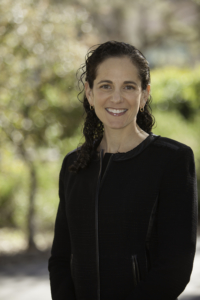 Alicia Seiger serves as the Deputy Director of the Stanford Steyer-Taylor Center for Energy Policy & Finance and leads the center’s work to identify opportunities for philanthropic and long-term investors to fill financing gaps to scale up clean energy. A serial entrepreneur and pioneer of new business models, Alicia was at the forefront of the web advertising and carbon offset industries before pursuing solutions in the rapidly evolving area of climate finance. Prior to joining the center, Alicia founded Climate Strategy Partners, a strategic advisory services provider that designed and executed climate and energy programs for foundations, investors and NGOs. She has served on the management teams of multiple startups, including at TerraPass, a pioneer of the US carbon offset market, and Flycast Communications, one of the first web advertising networks. She holds a MBA from the Stanford Graduate School of Business, where she also served as a case writer for the Center for Entrepreneurial Studies, and a BA in Environmental Policy and Cultural Anthropology from Duke University.
Alicia Seiger serves as the Deputy Director of the Stanford Steyer-Taylor Center for Energy Policy & Finance and leads the center’s work to identify opportunities for philanthropic and long-term investors to fill financing gaps to scale up clean energy. A serial entrepreneur and pioneer of new business models, Alicia was at the forefront of the web advertising and carbon offset industries before pursuing solutions in the rapidly evolving area of climate finance. Prior to joining the center, Alicia founded Climate Strategy Partners, a strategic advisory services provider that designed and executed climate and energy programs for foundations, investors and NGOs. She has served on the management teams of multiple startups, including at TerraPass, a pioneer of the US carbon offset market, and Flycast Communications, one of the first web advertising networks. She holds a MBA from the Stanford Graduate School of Business, where she also served as a case writer for the Center for Entrepreneurial Studies, and a BA in Environmental Policy and Cultural Anthropology from Duke University.
Stay updated on Twitter @stanfordstc | Web at http://steyertaylor.stanford.edu
Did you know HeatSpring Expert Jonathan Koomey is a research fellow at Stanford’s Steyer-Taylor Center for Energy Policy & Finance? Check out his free course on predictive modeling here:
The Sustainable Women Series, powered by RenewableEnergyWorld.com, will be bringing you case studies of women-backed sustainability projects that are building and powering a better world. Check HeatSpring Magazine regularly for our #SustainableWomen features!
Thank you to our amazing media sponsors for making this series happen! Do you know a women-backed or women-led sustainability project? Tell us about it! Email abby (at) heatspring (dot) com with details!

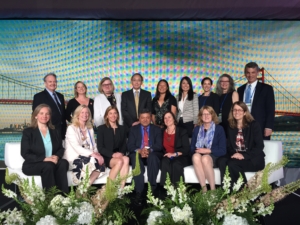
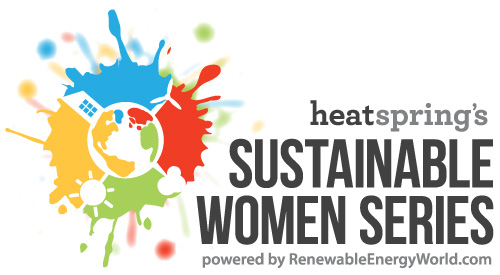
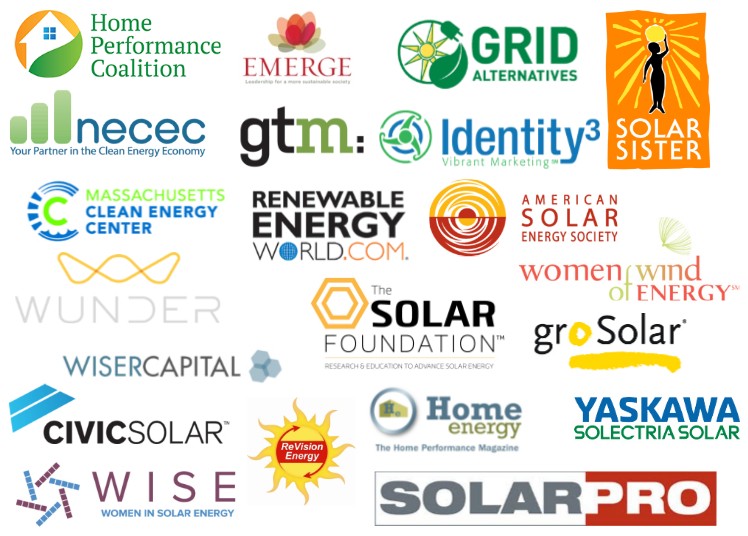








[…] **Published with permission by Heatspring – Full article: https://blog.heatspring.com/climate-change-global-crisis-a-wealth-creating-opportunity/?platform=hoo… […]